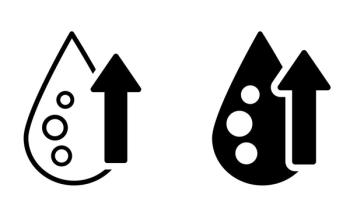
Editors Commentary: Where Have All the Ophthalmoscopes Gone?
My generation of primary care physicians (I graduated from medical school in 1974) was armed for clinical battle with reflex hammers, stethoscopes, and ophthalmoscopes.
My generation of primary care physicians (I graduated from medical school in 1974) was armed for clinical battle with reflex hammers, stethoscopes, and ophthalmoscopes. With the eye as a "window" to the body, the detection of diabetic retinopathy with a handheld ophthalmoscope obviated the need for renal biopsy for diabetic kidney disease throughout the 1970s and 1980s. Hypertensive emergencies were identified by the presence of grade 3 or 4 retinopathy.
CONFESSIONS OF A MIDNIGHT OPHTHALMOLOGIST
Years ago, when an anxious 42-year-old man came to my emergency department in rural Minnesota one night, the ophthalmoscope may have saved his vision. He complained of sudden blindness in his right eye. The funduscopic examination revealed a huge cholesterol plaque in his retinal artery.
I called the nearest ophthalmologist, whose hospital was a 40-minute drive from mine--a drive that would have cost the patient his vision. The ophthalmologist told me to get a 25-gauge needle and that he would instruct me over the phone on how to drain the aqueous humor from the patient's eye! My obvious lack of enthusiasm for this maneuver prompted him to suggest that I perform vigorous eye massage.
I was rubbing away at the patient's eye when the nurse tugged on my sleeve and told me that my efforts had caused the patient to become severely bradycardic. I stopped the massage and waited 30 seconds to see what would happen. To my immense relief, the plaque had fractured, and the patient's vision was restored. The specialist nicknamed me the midnight ophthalmologist.
WHY HAS THE OPHTHALMOSCOPE FALLEN INTO DISFAVOR?
Most clinicians use eye drops to dilate the pupils before a funduscopic evaluation. But there is widespread concern that mydriatic drops can precipitate acute narrow-angle glaucoma. Is this a myth? Or is the concern based on evidence strong enough to dismiss such an important examination? The answer seems to be no.
A recent editorial in the British Medical Journal may have resuscitated dilated eye examinations for primary care.1 Studies that included 6760, 4870, and 3654 patients whose eyes were instilled with dilating drops for examination demonstrated that 0.03%, 0%, and 0%, respectively, of the participants experienced acute narrow-angle glaucoma as a result. A systematic review of 600,000 patients whose eyes were dilated for funduscopic examination found that the risk of glaucoma was 1 in 20,000 at most. Even more interesting, eye drops administered in 13 studies to persons who had narrow-angle glaucoma did not cause acute angle closure.
The authors of the editorial added 2 important observations based on the evidence:
•Tropicamide (0.5%) is a safe dilating agent to use in primary care.
•When dilating drops are placed, warn the patient to seek medical attention if ocular redness or pain develops afterward or if nausea and vomiting occur.
The authors concluded that "both the patient and doctor should rest assured" that precipitating glaucoma is an "extremely slight risk."
So let's dust off the ophthalmoscopes and teach the next generation of primary care physicians what to look for.
Dr Rutecki is director of medical education, Mount Carmel Health System; clinical professor of medicine at The Ohio State University in Columbus; and clinical professor of medicine at Wright State University in Dayton, Ohio. He is also a member of the Editorial Board of CONSULTANT.
Newsletter
Enhance your clinical practice with the Patient Care newsletter, offering the latest evidence-based guidelines, diagnostic insights, and treatment strategies for primary care physicians.
















































































































































































































































































